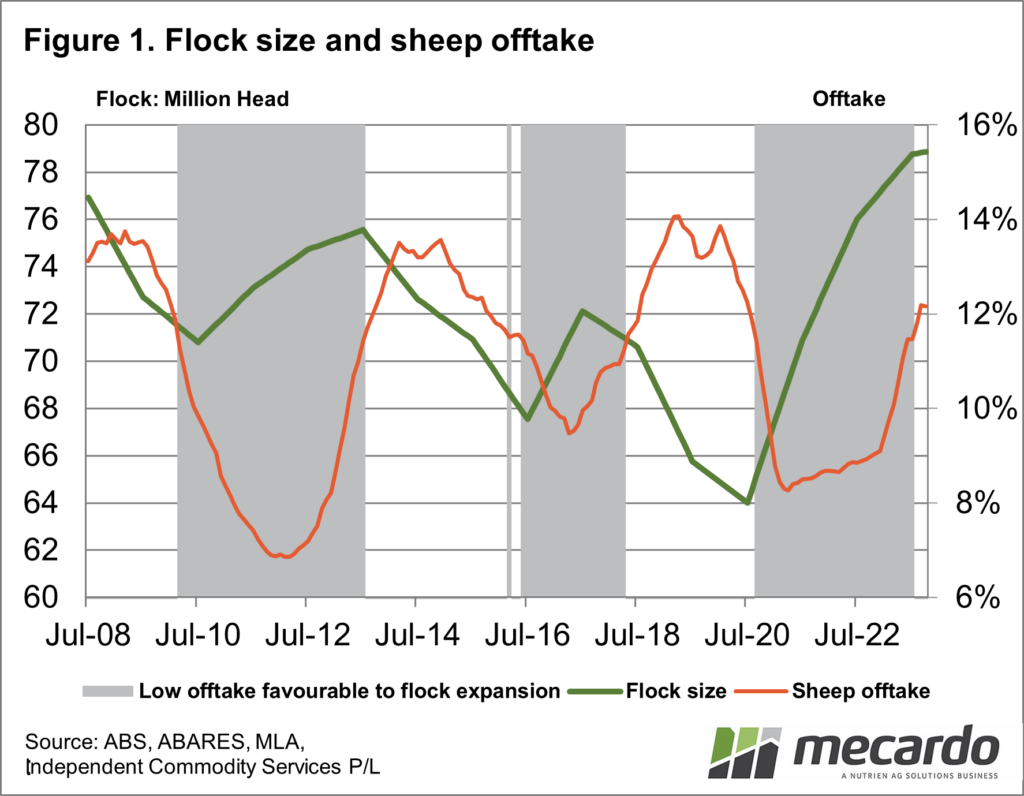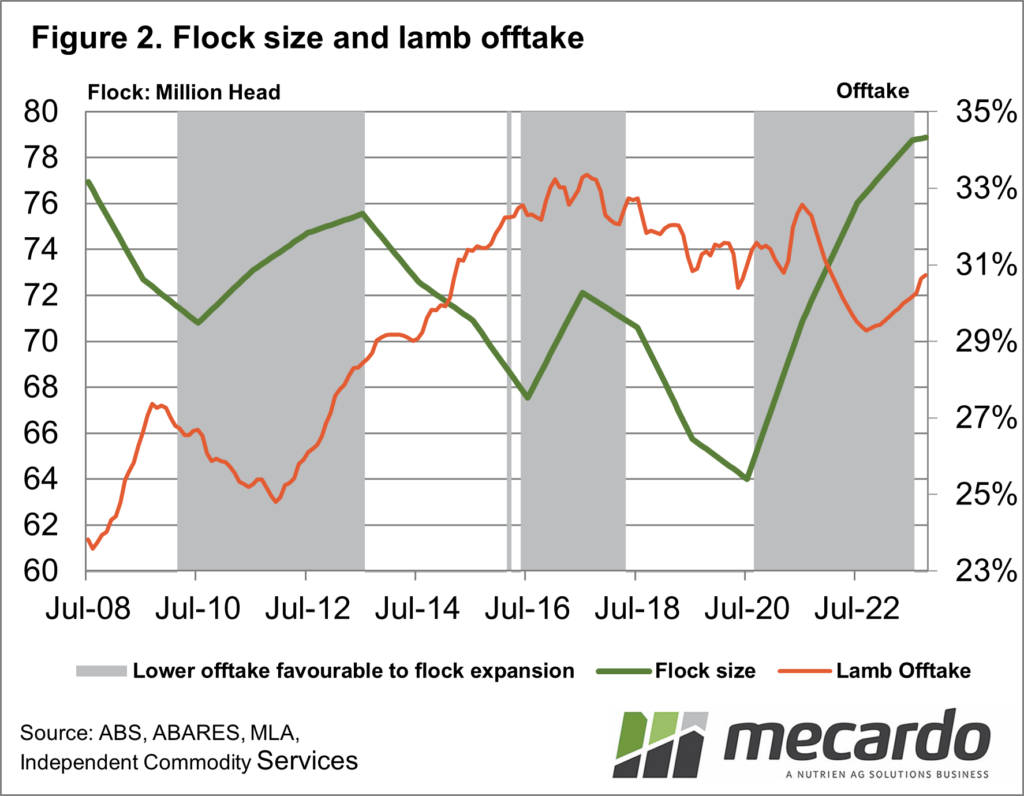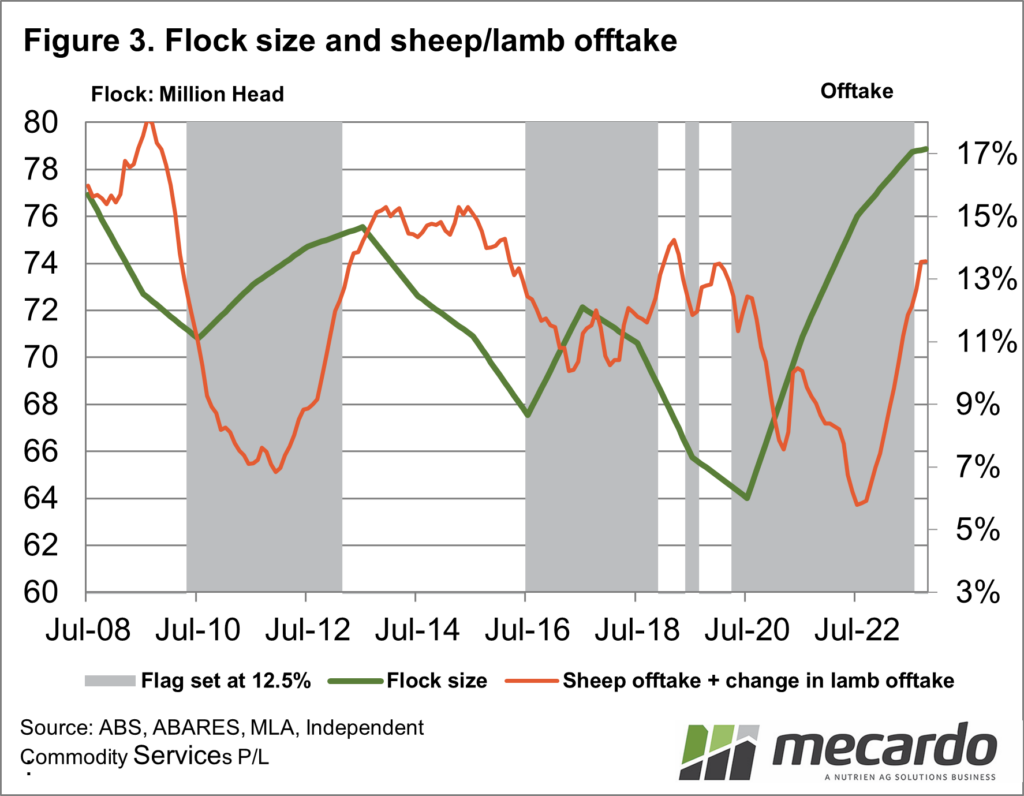In April, Mecardo looked at the relationship between rainfall and sheep sales to abattoirs (offtake) and opined that the coming spring was unlikely to be as good as recent springs in terms of rainfall therefore the offtake will increase. Unfortunately, this proved to be an understatement. In this article, we look at where offtake levels are currently.
As the Mecardo article in April showed, change in the number of adult sheep sold off farm to abattoirs is the main mechanism by which the flock size is adjusted (apart from the occasional on-farm liquidation schemes such as in the early 1990s). The article also showed how the sheep offtake was negatively correlated to rainfall, as the level of rainfall fell, offtake rose.
Figure 1 shows the Australian flock size (all breeds) from 2008 onwards, along with the adult sheep offtake, which has fluctuated between 14% (where the flock is being shrunk) and 7% (where the flock is in an expansionary phase). The shaded area highlights the periods when the sheep offtake was low enough, somewhere around 11-12%, to support an expansion in the flock. The Australian flock in recent years has been through its best increase (14 million head) since the late 1980s. This expansion has clearly finished.
Keep in mind the sheep offtake is a measure of sheep sales over a rolling 12-month period, expressed as a percentage of the flock size at the start of each 12-month period. As a result, the offtake as of October looks to be at a modest level (slightly above 12%) given the dry conditions and big increases in adult sheep slaughter numbers in 2023. If we take sheep sales for the July to October period only and extrapolate them out to a full year of sales, the current sheep offtake for the season to date is more like 15%, which is contractionary in terms of the flock size.
With the increase in prime lamb production in recent decades, the lamb offtake has increased. Figure 2 shows the Australian lamb offtake from 2008 onwards, in the same format as Figure 1. With the lamb offtake around 30%, variations in the lamb offtake are significant with regard to changes in the flock size. In 2011 and again in 2020-2022, the lamb offtake dropped as farmers held back some young sheep to help build flock numbers. This process was also finished with the lamb offtake approaching 31%.
Figure 3 combines the sheep offtake and changes in the lamb offtake, to provide a combined offtake which gives a more balanced view of the flow of sheep off-farm to abattoirs. It deepens the drop in offtake during periods of flock expansion and boosts the offtake during periods of flock contraction.
What does it mean?
The Australian flock is set to contract this season, exactly by how much is unclear as we are still working through a dry spring. This means lower sheep numbers in 2024-25 for slaughter and a lower wool supply, although exactly how this affects wool supply will depend on changes to the different sheep categories of the flock. This will be positive for both sheep meat and wool prices.
Have any questions or comments?
Key Points
- It will not come as news that the flock expansion of 2021 and 2022 has come to an end in Australia.
- What is surprising is the moderate level of sheep offtake, even when annualising recent data from recent months rather than using a whole year’s data.
- We are still working our way through a dry spring, so it seems likely the offtake levels will increase further.
Click on figure to expand
Click on figure to expand
Click on figure to expand
Data sources: ABS, ABARES, MLA, ICS, Mecardo




